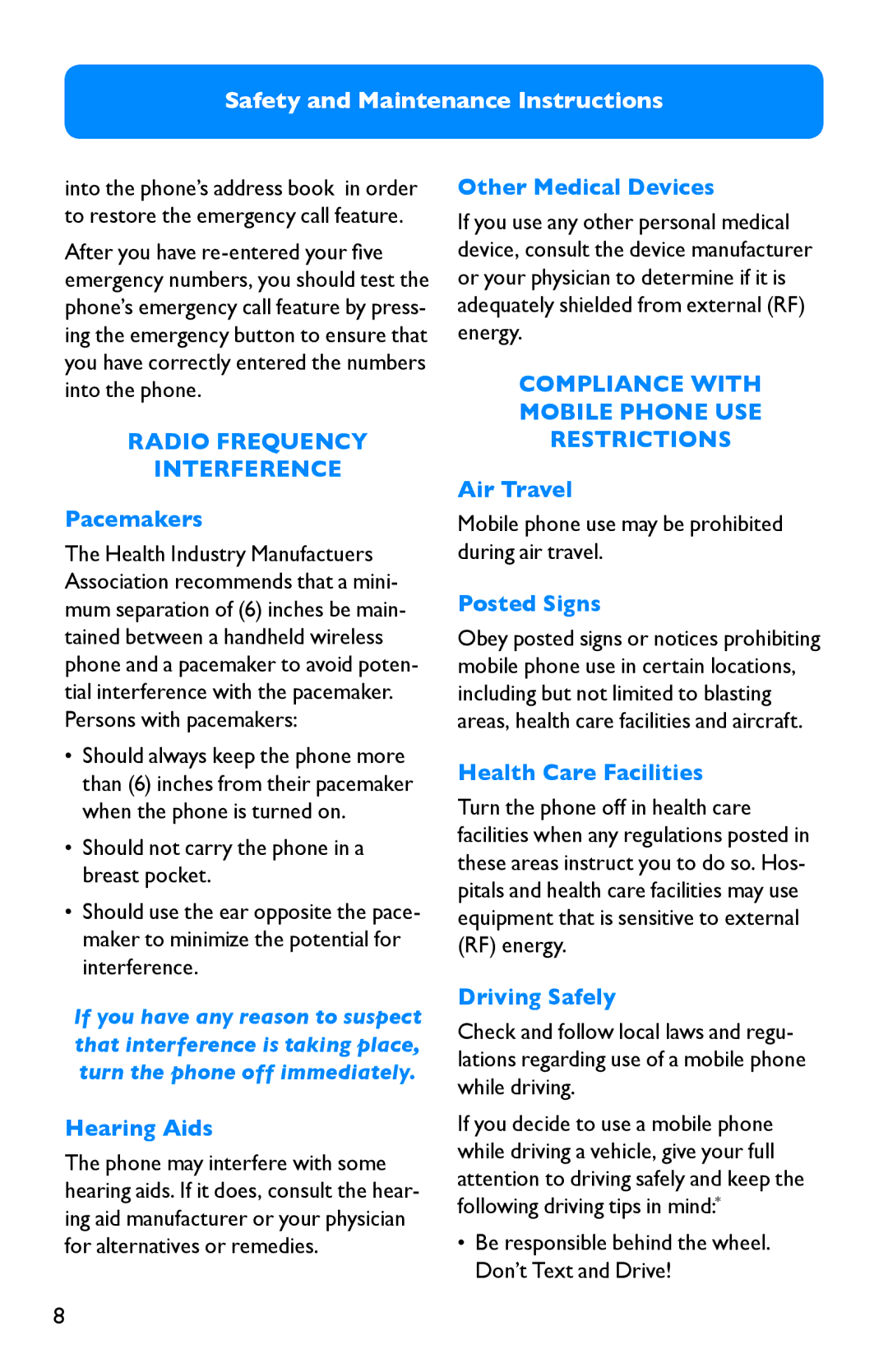Safety and Maintenance Instructions
into the phone’s address book in order to restore the emergency call feature.
After you have
RADIO FREQUENCY
INTERFERENCE
Other Medical Devices
If you use any other personal medical device, consult the device manufacturer or your physician to determine if it is adequately shielded from external (RF) energy.
COMPLIANCE WITH
MOBILE PHONE USE
RESTRICTIONS
Air Travel
Pacemakers
The Health Industry Manufactuers Association recommends that a mini- mum separation of (6) inches be main- tained between a handheld wireless phone and a pacemaker to avoid poten- tial interference with the pacemaker. Persons with pacemakers:
•Should always keep the phone more than (6) inches from their pacemaker when the phone is turned on.
•Should not carry the phone in a breast pocket.
•Should use the ear opposite the pace- maker to minimize the potential for interference.
If you have any reason to suspect that interference is taking place, turn the phone off immediately.
Hearing Aids
The phone may interfere with some hearing aids. If it does, consult the hear- ing aid manufacturer or your physician for alternatives or remedies.
Mobile phone use may be prohibited during air travel.
Posted Signs
Obey posted signs or notices prohibiting mobile phone use in certain locations, including but not limited to blasting areas, health care facilities and aircraft.
Health Care Facilities
Turn the phone off in health care facilities when any regulations posted in these areas instruct you to do so. Hos- pitals and health care facilities may use equipment that is sensitive to external (RF) energy.
Driving Safely
Check and follow local laws and regu- lations regarding use of a mobile phone while driving.
If you decide to use a mobile phone while driving a vehicle, give your full attention to driving safely and keep the following driving tips in mind:*
•Be responsible behind the wheel. Don’t Text and Drive!
8
